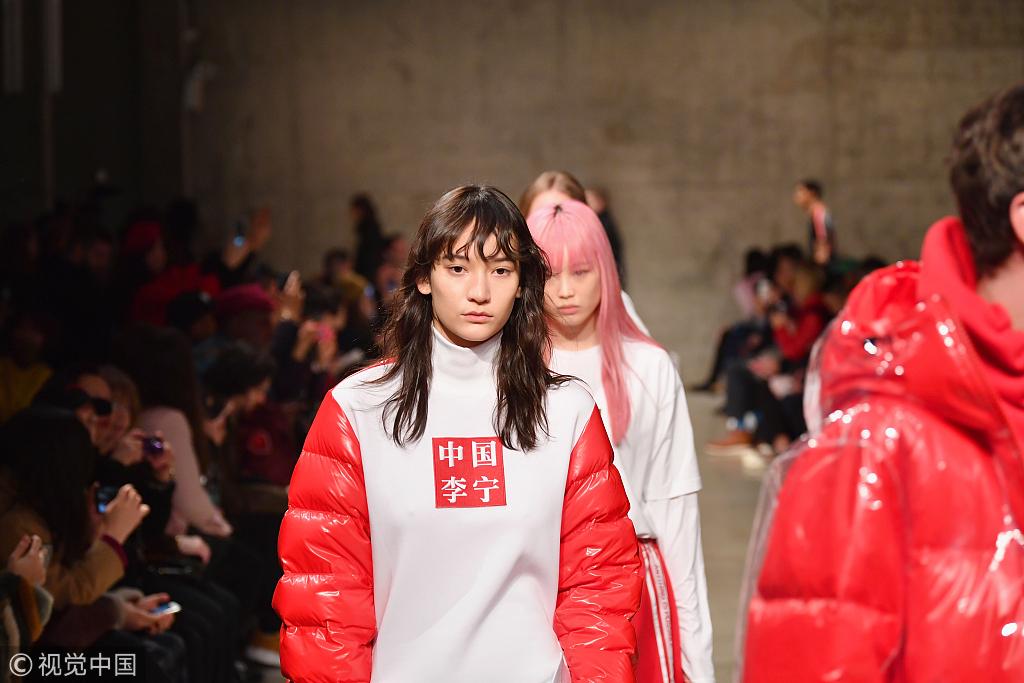
Opinion
18:13, 08-Feb-2019
NYFW: A knocking brick for China to enter int'l fashion world
Liu Chunsheng

Editor's Note: Liu Chunsheng is an associate professor at Central University of Finance and Economics in China, and deputy dean of Blue Source Capital Research Institute. The article reflects the author's opinion, and not necessarily the views of CGTN.
New York Fashion Week (NYFW) is approaching. The upcoming season will be the first where men's and women's showcase have been merged. Up to now, 22 Chinese designers are expected to showcase their newest collections at the event.
In recent years, Chinese brands and designers have frequently appeared in the NYFW. With the rapid development of the Chinese fashion industry, a new generation of Chinese designers has opened the door of the NYFW. Their designs bring the fashion concept of integrating Chinese elements to a broader stage.
Some designers say that the NYFW, compared with the high threshold of "old fashion week" such as Paris and Milan, is the ideal "knocking brick" for Chinese brands to enter the international fashion world.
They believe that for Chinese brands, the NYFW has a significant advantage in openness and vitality compared with the slowing market in Europe.
In 2018, Li Ning, a Chinese sports brand that has been silent for several years, made a strong appearance in the NYFW. The show instantly exploded social media.
Praises and inquiries immediately flooded Li Ning's official Weibo and WeChat accounts. Some popular items of Li Ning were soon sold out.
Thanks to its eye-catching show in the NYFW, Li Ning's share price rose from 6.04 HKD to 7.29 HKD, up 20 percent from February to March that year. The brand's market value has appreciated by 2.725 billion HKD in the month after the fashion week.

A model is wearing Li-Ning collection during the 2018 New York Fashion Week in New York City, February 7, 2018. /VCG Photo
A model is wearing Li-Ning collection during the 2018 New York Fashion Week in New York City, February 7, 2018. /VCG Photo
Li Ning's rise is a reflection of China's industry upgrading. Many textile and garment companies began to accelerate the pace of overseas mergers and acquisitions, and an increasing number of world-renowned brands have become their main target.
China's domestic brand ICICLE bought French fashion brand Carven; Ruyi Group bought Bally and some other international famous brands. The integration of global resources has promoted Chinese textile and garment enterprises to the high-end of the value chain.
The degree of technological application and the quality of products are the ruler of a country's industrial development and important yardsticks to measure the actual level of its manufacturing.
While China's low-cost advantage is gradually fading, its textile and garment industry is remolding manufacturing advantages in the global production networks by making exquisite craftsmanship and improving quality and designs.
With an increasing number of enterprises "going out" and the rise of collaborative manufacturing, experience economy, sharing business and other modes of international cooperation, the integration of Chinese culture and local culture has led to more creative designs and technological innovation.
By creating an international show, building a shared factory, and using the industrial Internet to achieve cross-border innovation, "borderless," creative ecology has promoted China's garment industry and unleashed more potential of the country's creativity.
(If you want to contribute and have specific expertise, please contact us at opinions@cgtn.com)

SITEMAP
Copyright © 2018 CGTN. Beijing ICP prepared NO.16065310-3
Copyright © 2018 CGTN. Beijing ICP prepared NO.16065310-3